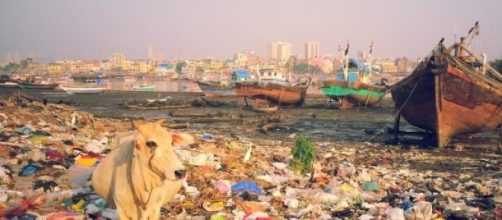According to the international service of the US Department of Agriculture, India is the second largest exporter of beef and veal in the world, despite being the fourth largest producer. Indians eat less than half of their production. In 2014, 1850 thousand tons were exported out of 4,100 thousand tons produced. As for 2015, India is planning to export 1950 thousand tons. A month ago, the Indian state of Maharashtra State banned beef sale or possession.
The growth in Indian meat exports is due to its low production cost. A lot of cattle previously used for the production of milk is later used for its meat and leather.
In 2013, according to the Indian Ministry of food processing industry, India had over 3600 official slaughterhouses. Despite the ban on killing animals outside those, there is an estimated number of 30.000 illegal abattoirs. As part of an investigation about leather production, a PETA Indian inspector (People for Ethical Treatment of Animals) testifies: "While the cows were being loaded, I could hear the gurgling of one cow choking on her own blood. The rope in her nose had been improperly placed, and with the constant tugging on it by rough handlers, as well as being tethered to her fellow cattle during the 12-hour march, it had ripped through her nose, and blood was pouring down her face."
With more than 132 million tonnes of milk produced in 2013, India is the largest producer in the world.
Indian milk mostly comes from buffaloes, cows and goats. According to the Department of Animal Husbandry, the government has invested Rs. 2242 crore (£ 215,577,300) to meet a national demand of 150 million tonnes of milk by 2016-17. Continually inseminated, cows are made pregnant every year so that they produce milk. In addition to the poor hygiene of such practices, electric milk pump pulls on their udders in order to produce on average 14kg of milk a day. To reach such huge quantities, illegal hormones like oxytocin are used, as they act on the uterus and mammary glands. Whereas they can normally live up to 18 years, their life expectancy does not exceed an average of 6 to 7 years, time after which, they are sent to slaughter.
According to a PETA investigation, there are thousands of illegal dairies, each of them using 50 to 3000 cows. Most of Delhi's dairies do not have electricity or drainage of excrements, forcing cows to live in those conditions. Sometimes forced to walk in the heat for days without eating or drinking, they collapse from exhaustion. Cruel techniques are used to get them to stand and walk. PETA India has recently denounced the use of peppers in their eyes. In slaughterhouses, animals are killed each in front of each others. - which is illegal - and they are skinned and dismembered while still aware.
If they are too lean to be sold or used for their milk, they are often abandoned in the street, where they spend their days trying to survive by eating from the garbage, swallowing huge amounts of plastic most of the times (see photo). Often attached to poles along the roads, while people passing caress them saying "holy"...

